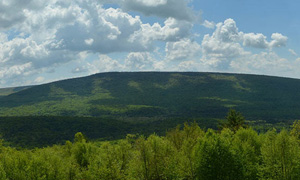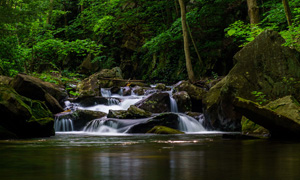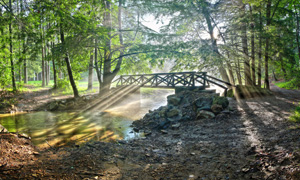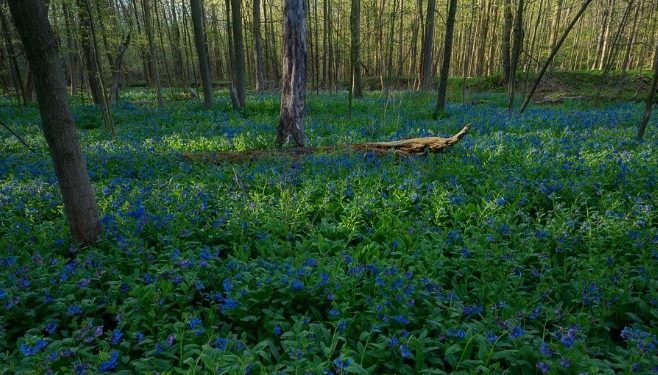
Above Image: Field of Virginia bluebells, photo credit: Matt Shiffler Photography
Written by Greg Podniesinski, Chief, Natural Heritage Section of the PA Department of Conservation and Natural Resources, as featured in the Bureau of Forestry‘s “Forest Fridays”.
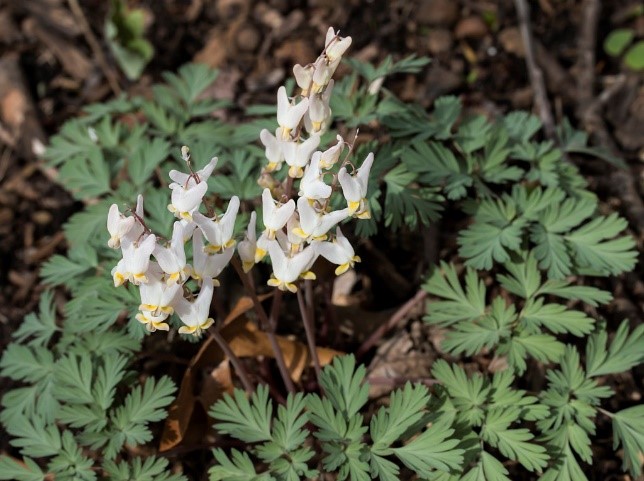
Dutchmans breeches, Photo credit: Muffet
March weather is known for its extremes; note the bitter cold we had last weekend and the well-above-normal temperatures forecast for the next two weeks. You might think these weather swings would prohibit plant growth, but there is a group of plants well-adapted to these conditions. Emerging this time of year in our forests and woodlands, spring ephemerals flower, set seed and go dormant by the time the forest canopy fully leafs-out, or shortly thereafter.
These include species like bloodroot, trilliums, hepaticas, woodland anemones, May-apples, Virginia bluebells, trout lily, dutchman’s breeches, and many others. While we enjoy their appearance as they brighten our forests, they also play an important role for wildlife emerging from winter hibernation and dormancy.
A wide variety of pollinators emerge in early spring and head straight for their favorite spring wildflowers including bumblebees, miner bees, halictic bees, syrphid flies, gnats, and early season butterflies. Some species are very particular, such as the trout lily miner bee and the Virginia spring beauty miner bees, which prefer to feed on the nectar of their namesake flowers. Bumblebees are less picky and will visit a wide variety of spring wildflowers.
 Shown left: Yellow trout lily, photo credit: Rob Routledge Sault College Bugwood.org.
Shown left: Yellow trout lily, photo credit: Rob Routledge Sault College Bugwood.org.
Shown right: Miner bee in its burrow, photo credit: Steve Begin
The common Jack-in-the-pulpit is pollinated by fungus gnats, which works out well for the plant, but not so well for the gnats. The male flowers have openings large enough for gnats to enter and leave, while the female flower has an opening designed for gnats to enter, but they cannot leave, leaving the gnat to wander inside the female flower (and pollinate it) until they die. The Jack-in-the-pulpit’s trickery doesn’t end there, as the fungus gnats are drawn to the flower initially by the faint fungus-like odor it emits.

Shown left: Male Jack-in-the-pulpit flower, photo credit: Jack W. Pearce. Shown right: Fungus gnat, photo credit: John Tann
Other spring ephemerals rely on insects to disperse their seeds such as the bloodroot. While the bloodroot has attractive white flowers (but no nectar), it “bribes” ants to collect and bury its seeds. It does this by producing seeds with a fleshy piece of tissue called an elaiosome, which is rich in fatty acids and irresistible to ants. The seeds are carried into the ant nest, were the elaiosome is consumed and the seed tossed on the ant’s underground, nutrient-rich trash heap, perfect for seed germination.
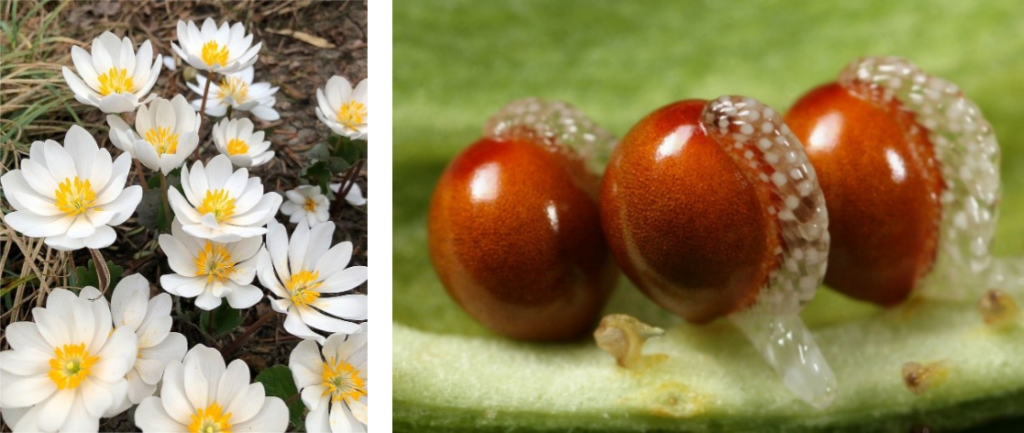
Shown left: Bloodroot, photo credit: Ronald Douglas Frazier. Shown right: Bloodroot seeds with elaiosomes, photo credit: Cotinis
Insects aren’t the only wildlife that enjoy spring ephemerals. The mayapple is a spring wildflower that produces a single flower, and subsequently, a single fruit. The entire plant is toxic, due to the toxin podophyllin, but the ripe yellow fruit is only slightly toxic and savored by many animals. Surprisingly, a major consumer of mayapple fruits is the box turtle. Not only are box turtles important for dispersing mayapple seeds, but seeds that pass through the box turtles gut have a much higher germination rate.

Shown left: Mayapple with flower, photo credit: BlueRidgeKitties. Center: Eastern Box Turtle, photo credit: Intrinsic3141. Shown right: Mayapple fruit, photo credit: Matthew Beziat
With a warmer-than-normal remainder of March ahead of us, get out in the woods, enjoy the spring wildflowers, and keep an eye out for the wildlife enjoying them too!
*All photos in this article were sourced from public domain.


